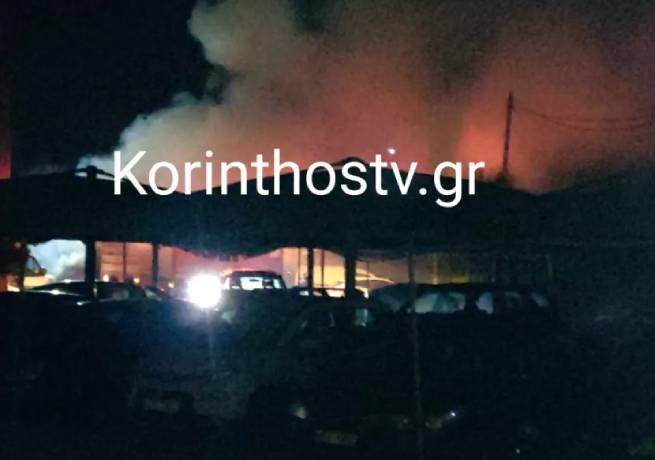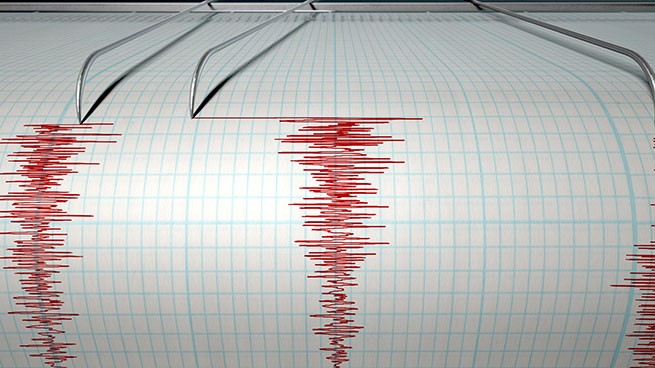Dutch researcher Frank Hoogerbeets, in his new report after yesterday's earthquake in Evia, said that it could be a harbinger of a strong earthquake in Greece.
In particular, the Dutch researcher said: “A widely felt 4.6 magnitude earthquake in Greece follows a variation on the 23rd. This could be a precursor to a stronger tremor.”

What Efthymios Lekkas said
According to the President of the OASP, Efthymios Lekkas, yesterday's earthquake shook attica evening, occurred right on the coast. Speaking to ERT, Lekkas said the earthquake caused more concern than it should have in an area with frequent seismic activity.There is no particular reason for concern,” he said. «We are monitoring the development of the phenomenon, we have no damage, except for minor damage to the building where the work was carried out,” he said.
But of particular interest was his statement about the aftershocks that had been occurring throughout the evening, and that “a 3.5-4 earthquake is within the expected range, we want that.” Mr Lekkas concluded by saying he did not think there would be anything stronger.
Faults of Concern
In a previous interview with the newspaper “Eleftheros Typos” Seismologist Gerasimos Papadopoulos also named specific faults that are under the scientists' microscope. What are these faults?
Gulf of Corinth
In connection with the discussion that began in the previous period about the Alcyonids and the Corinthian in the bayhe said that “The Eastern Gulf of Corinth is a natural laboratory, it has high seismicity, and after 40 years of no earthquakes in the region, it is ripe for a fairly strong earthquake.” As he explained, there is no reliable indication of when it will occur, whether it will be in five or three years.
“However, in the near future, Corinth will be activated. Unfortunately, at a global level we cannot determine either the time of earthquakes or, to a large extent, the location of a strong earthquake.”
Commenting on the question of whether we are ready for such a phenomenon and whether our structures will withstand it, he replied: “I dare to assume that they will survive. I dare say that we are in much better shape than in 1981. I must point out that in 1984-86, anti-seismic regulations were adopted that are among the best in the world, and this is mainly due to the efforts of the Greek scientific community, engineers and geoscientists, under the control of course of the Earthquake Planning and Protection Agency. We are dealing with very good anti-seismic regulation, and the buildings are, in fact, largely invulnerable to a 6 degree earthquake. Of course, there are also old buildings that are vulnerable, and that is where we need to focus our attention.”
Theban Rift
The Thebes region remains an active zone that has not died down after the summer surge and continues to produce small earthquakes. According to seismologists, the previous earthquake could have lasted a year and a half, as it did in 1893, lagging behind the life of mankind by decades – the minimum period for an earthquake. And the Theban fault is active and has produced an earthquake with a magnitude of 6 to 6.2.In 1914, there was an earthquake for which we have no evidence today that there had been earthquakes before, which speaks to the complexity of the phenomena and the fact that they cannot be put into a form,” Papadopoulos said about this phenomenon.
The North-Eastern Aegean Sea requires attention
Another area is the northeastern Aegean Sea. “This area definitely needs attention. During the 1980s, particularly in 1982 and 1983, there were several strong earthquakes here, and in 2014 there was another one with a magnitude of up to 6.9 on the Richter scale. Therefore, it is a seismotectonic structure with a very high seismic potential, since it is a continuation of the North Anatolian Fault, which comes from the northern part of Turkey, enters the Sea of Marmara and moves to the North Aegean Sea. The fact that nearby settlements are located at a considerable distance from this fault does not relieve us of our responsibility to carefully monitor and evaluate the data.”
According to experts, the 5.4 magnitude earthquake that occurred on 16/01/2022 in the North Aegean Sea may be just the beginning of the process, and we may see another strong earthquake repeat in one, two or three years.







More Stories
Water Spout in Halkidiki
Supreme Court calls for "vigilance" in relation to those who "uses water illegally"
Destructive weather hits Meteora: floods, rockfalls, landslides